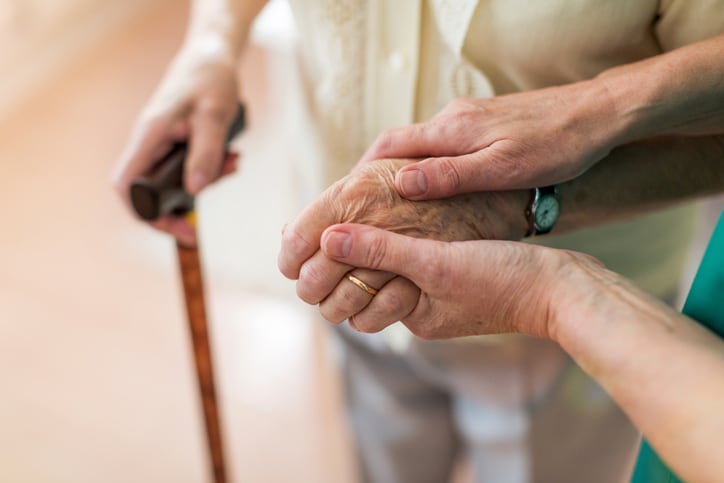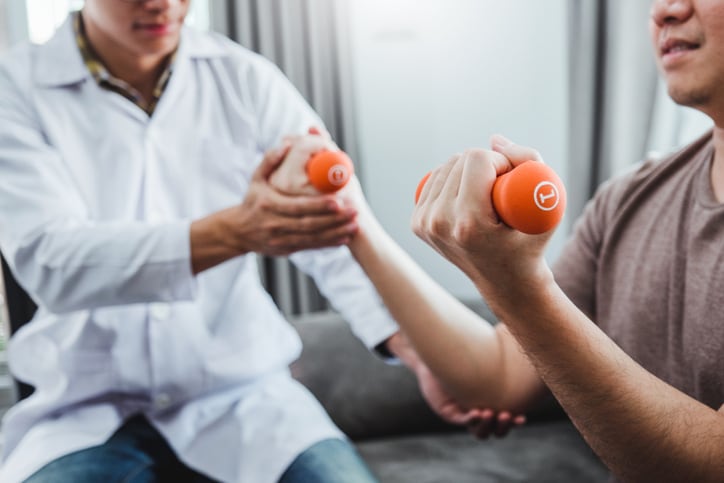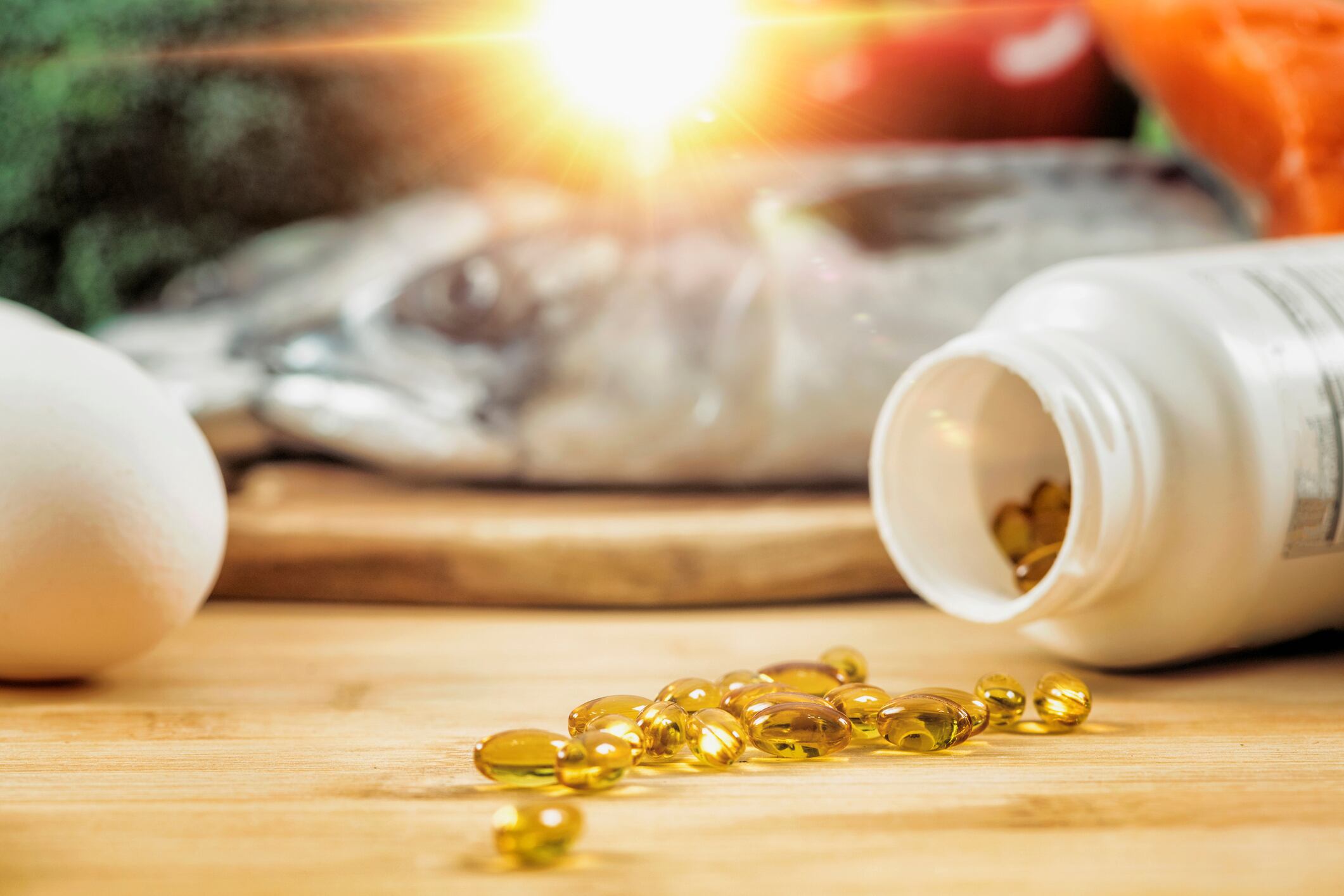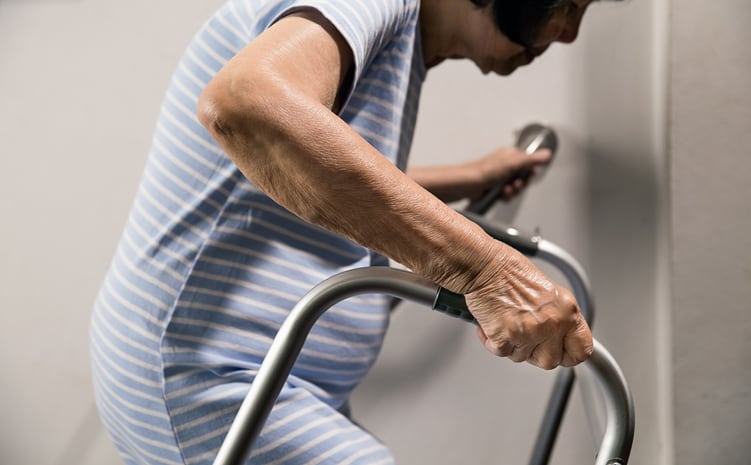The inverse association between low vitamin D levels and the frailty syndrome are not completely understood, but there are several potential biological mechanisms that could explain the relationship, researchers say.
Considerable overlap exists between sarcopenia and frailty, such as low grip strength, gait speed and muscle mass.
To better understand this overlap, researchers from University at Buffalo study measured frailty in mice by examining unexpected weight loss, weak grip strength, poor endurance, low activity levels and slow gait speed. The study found that higher doses of vitamin D actually slowed progression of frailty in older mice.
Kenneth L. Seldeen, PhD, first author and research assistant professor in the Department of Medicine in the Jacobs School of Medicine and Biomedical Sciences at UB, and Bruce R. Troen, MD, professor of medicine and chief of the Division of Geriatrics and Palliative Medicine and director of the Center for Successful Aging, both in the Jacobs School, have been conducting research on vitamin D together for over a decade.
The current preclinical study utilized 24-28–month-old mice (the equivalent of 65-to-80-year-old adults), which found that frailty can be slowed with what might be considered "over" supplementation with vitamin D, or "hypersufficiency."
"Studying the direct impacts of serum vitamin D levels in humans is fairly difficult, as the impacts might take years to manifest and it may not be safe to test the impacts of having persistently low or high vitamin D levels," explained Seldeen. "Using an animal model, we are able to examine these potentially riskier levels of vitamin D and the biological impacts during aging. Also, doing so in genetically identical mice all living the same lifestyle, compared to the complexity of human diversity, allows greater focus on the specific effects caused by the different vitamin D levels."
The study
The investigators measured frailty in mice based on strategies similar to those used for humans, where frailty is defined as having three or more of the following: unexpected weight loss, weak grip strength, poor endurance, low activity levels and slow gait speed.
The mice were assorted into groups (125 IU, 1000 IU, 8000 IU) based upon body weight and switched from facility chow to a chow containing either 125, 1000, or 8000 IU vitamin D3 per kg. After the 4-month experimental time frame, final group numbers following attrition due to natural causes were 12 for the 125 IU, 8 for the 1000 IU, and 11 for the 8000 IU groups. Body weight, blood levels, and physical performance including rotarod, gait speed, open field activity, grip strength, inverted grip endurance, treadmill and frailty were all assessed over four months.
Findings
“The 125 IU mice exhibited worse grip strength (p = 0.002) and inverted grip hang time (p = 0.003) at endpoint and the 8000 IU mice transiently displayed greater rotarod performance after 3 months (p = 0.012), yet other aspects including treadmill performance and gait speed were unaffected. However, 125 and 1000 IU mice exhibited greater frailty compared to baseline (p = 0.001 and p = 0.038, respectively), whereas 8000 IU mice did not (p = 0.341). These data indicate targeting higher serum 25-OH vitamin D levels may attenuate frailty progression during aging,” the authors noted.
"We found that in aged mice, low levels of vitamin D result in physical declines, such as reduced grip strength and grip endurance—the ability to sustain a grip—and that they started developing as soon as one month after reduction of vitamin D intake," said Seldeen. "We also found that low vitamin D levels were associated with a decline in both balance and coordination.”
Frailty
"Human studies have shown that low vitamin D levels are associated with a greater risk of falls, particularly in frail older adults. Our data support this notion,” said Seldeen.
Over the four months of treatment, vitamin D status played a crucial role in the onset of frailty. The research team found that frailty progressed in two groups of the mice whose daily vitamin D consumption was either 125 International Units (IU) per kg of chow, resulting in an insufficient level, or 1,000 IU per kg of chow, which establishes serum levels of vitamin D considered sufficient for a human.
"Only when mice were given the highest amount of vitamin D, at 8,000 IU per kilogram of chow, did frailty not progress over the timeframe of the study," noted Seldeen.
More may be better
"There is disagreement about what level of vitamin D is considered sufficient for adults," said Seldeen.
He explained that the National Academy of Medicine (NAM) has identified 20 nanograms per milliliter (ng/ml) of vitamin D in the blood as the level necessary for adults to be vitamin D sufficient, based largely on what is needed to maintain bone health. The NAM Food and Nutrition Board has recommended that adults ages 19-70 consume 600 IU of vitamin D per day and that individuals over 70 consume 800 IU of vitamin D per day.
"The findings of our study suggest that a level of even 30 ng/ml is not enough, and that in fact 60 ng/ml was needed in order to prevent frailty progression in these older mice," Seldeen said.
Seldeen’s suggestion of 60ng/ml could be achieved with a maximum daily dose of 4,000 IU/day, a level considered safe by the NAM.
"To slow the progression of frailty, it actually took greater amounts of vitamin D than what is currently considered sufficient for a human," said Seldeen.
Troen added that he recommends older adults take a minimum of 2,000 IU of vitamin D per day. "This is particularly important for our frail geriatric patients. But based upon our research, we believe that a lifetime of ample vitamin D supplementation will optimize long-term functional capacity and health."
"However, this study raises the possibility of including higher dose groups into future human trials involving vitamin D,” noted Seldeen.
The research team plans to conduct vitamin D studies on humans down the road. In the meantime, they are starting a mouse study that will examine the impacts of vitamin D status on the underlying muscle biology during aging to better understand why vitamin D affects physical performance and frailty.
Source: Nutrients
2020, 12(10), 3005; https://doi.org/10.3390/nu12103005
“Vitamin D Insufficiency Reduces Grip Strength, Grip Endurance and Increases Frailty in Aged C57Bl/6J Mice”
Authors: K. Seldeen et al.




